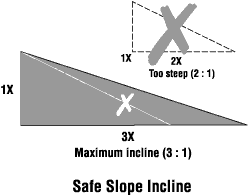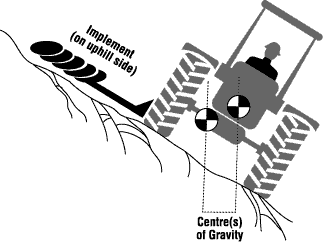Tractors - Attachments and Implements
On this page
What are tractor attachments and implements?
Back to topTractor attachments and implements are devices that can be attached to a tractor. Attachments and implements may be designed for general use or be highly specialized for agriculture, landscaping, forestry, construction, and other industries.
While the terms are often used interchangeably, in general:
- Attachments are supplementary devices for the tractor, such as loaders and three-point adaptors.
- Implements are specialized tools used for a given task, such as mowers and augers.
- Accessories include driver safety and comfort items like
rollover protective structures (ROPS) , ergonomic seats, weather protection, and radios.
Attachments and implements can be mounted to the tractor at three main locations:
- Front – with arms to either side of the tractor engine, such as a front loader.
- Mid – under the tractor body between the front and rear wheels, such as a mower deck.
- Rear – with a drawbar or three-point hitch, such as a rear blade. Some attachments and implements are powered and adjusted using hydraulic systems or a power take-off (PTO).
What precautions should be taken when using any tractor attachment or implement?
Back to topWhen using any tractor attachment or implement:
- Make sure the equipment suits the task(s) it will be used for. Using a device beyond its intended use and design limits could result in injuries.
- Always read, understand and follow the manufacturer’s safety manual. Only use equipment that is in good repair. Equipment should be inspected frequently for signs of wear and damage.
- Make sure that all guards or shields are in place and operational. Guards around the power take-off shafts, gearbox and other rotating or spinning equipment are very important. Damaged guards and shields should be repaired or replaced immediately.
- Remember that potential energy (electrical, gravitational, hydraulic, mechanical) can be stored in elevated and powered equipment. Use hazardous energy controls when required.
- Do not crawl under anything supported only by a hydraulic lift. Always use blocks, jack stands, hoists, or other suitable and stable supports to position equipment.
- Always stand away from moving or rotating equipment. Where possible, operate from the tractor seat, and have bystanders be at least 6 metres (20 feet) away.
- Moving equipment may trap a person, and spinning parts can easily catch loose clothing, long hair, shoelaces, and hood strings. Loose and dangling items should be avoided, securely tied back, or covered.
- Do not stand between a tractor and an attachment or implement.
- Know how to stop the tractor, engine, and equipment quickly in case of emergency.
- Follow shutdown procedures, apply the tractor parking brake, and wait for all moving parts to stop before getting off the tractor or approaching the attached equipment.
What are tips for using post drivers?
Back to topThese safety tips may apply to other attachments and implements that drop, strike, and compress.
- Make sure that all shields and guards are in place and are operating correctly.
- Steady the post with a safety fork or guide to prevent injury if the post breaks or slips.
- Lower the hammer and shut off the engine when making adjustments or lubricating.
- Lower and lock the hammer in the lowest position to prevent uncontrolled movement. Switch off and remove the key.
- Do not place any part of your body between the hammer and the top of the post.
What are tips for using augers?
Back to topThese safety tips may apply to other attachments and implements that rotate.
- Keep hair, clothing (loose clothing, strings, shoelaces), jewellery, hands and feet away from augers to prevent entanglement.
- Keep the area free of objects that may cause slips or falls.
- If the auger becomes stuck, shut off the engine and disengage the power before attempting to unclog the auger. Slowly turn the auger backwards with a wrench.
- Make sure all guards are in place, properly secured and functional.
- Watch for overhead powerlines when moving or towing augers.
- Do not use hands or feet to push material away from the auger.
What are tips for using mowers and blades?
Back to topThese safety tips may apply to attachments and implements with blades that cut, gouge, and scrape.
- Make sure that all guards are in place.
- Make sure that the engine is shut off and all power is disengaged before cleaning the blades or making repairs.
- Know how the blades operate and where they are located. Keep hands away from blades.
- Inspect the blades daily, and after hitting a hard object. Do not use damaged or bent mower blades. Replace blades if damaged (bent, gouged, or cracked) or worn more than 25% of the original size.
- Make sure that bystanders are at a safe distance, about 92 m (300 ft) from mowing operations.
- Do not mow grass on slopes with an incline steeper than three to one.

- Do not cut with a mower or blades on the downhill side. Cut on the upside of a slope to maintain tractor stability.

- Do not remove materials when the blade is running.
- Fact sheet last revised: 2025-06-23

